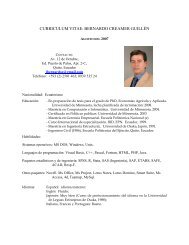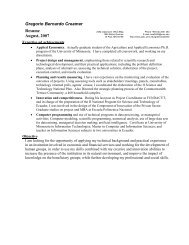reflections on nepal capacity 21 initiative - Department of Applied ...
reflections on nepal capacity 21 initiative - Department of Applied ...
reflections on nepal capacity 21 initiative - Department of Applied ...
You also want an ePaper? Increase the reach of your titles
YUMPU automatically turns print PDFs into web optimized ePapers that Google loves.
2. Launching SCDP4 . The overall levels <strong>of</strong> formal educati<strong>on</strong> and literacy are low.5. Government agencies have not been effective in overall development <strong>of</strong> the VillageDevelopment Committees (VDCs).6 . The commitment <strong>of</strong> DDCs and VDCs in collaborati<strong>on</strong> and building partnership with theProgramme is high.7 . The system <strong>of</strong> local governance is weak.Based <strong>on</strong> these criteria, the HMG/NPC in c<strong>on</strong>sultati<strong>on</strong> with UNDP selected Surkhet, Kailaliand Dang. SCDP formed partnerships with the DDC in each district, and to ensure itscommitment to and support for the Programme, the DDC signed a Terms <strong>of</strong> Partnership(ToP) with SCDP.8In 1999 it was decided that the Programme needed a more nati<strong>on</strong>al outlook. So theprogramme had to include more districts during Phase II to implement that decisi<strong>on</strong>. Itwas agreed to extend the programme in three more districts in the hill and mountain z<strong>on</strong>escovering a range <strong>of</strong> ecoregi<strong>on</strong>s and the eastern parts <strong>of</strong> Nepal. UNDP also wished to promotecoherence and co-ordinati<strong>on</strong> with other UNDP assisted projects which was reflected in thecriteria. Eventually the criteria for selecting the new Programme districts were:1. Presence <strong>of</strong> UNDP-assisted PDDP, LGP, SGP or REDP programmes and SNV-assisted DPPin the district;2 . Degraded watershed districts as identified by HMG/UNDP/FAO in a report <strong>on</strong> WatershedC<strong>on</strong>diti<strong>on</strong>s <strong>of</strong> the Districts <strong>of</strong> Nepal;3 . Overall composite index <strong>of</strong> development (using the ICIMOD & SNV, 1997. Districts <strong>of</strong>Nepal - Indicators <strong>of</strong> Development 1997;4 . 1996 District Human Development Index (UNDP. 1998. Nepal Human DevelopmentReport);5. The commitment <strong>of</strong> DDCs and VDCs in collaborati<strong>on</strong> and building partnership with theProgramme is high; and6 . The system <strong>of</strong> local governance is weak.Interacti<strong>on</strong> am<strong>on</strong>gdevelopment partners inSimikot, Humla.It was accepted that there would be many more districts qualified for SCDP support thanthe Programme could support. So, other factors were also taken into account after thedistricts were short-listed. The natural resource potentials in those districts had to be high.The districts needed to have regular access to transportati<strong>on</strong> (there should be airports ifthere were no roads) so that m<strong>on</strong>itoringwould be easier. In some cases, the strength<strong>of</strong> the DDC leadership, tourism potential, etc.were also c<strong>on</strong>sidered. Preference was alsogiven to have at least <strong>on</strong>e districtrepresented from all the DevelopmentRegi<strong>on</strong>s in the Programme. Districts fromthe Central Development Regi<strong>on</strong> that isrelatively prosperous were excluded.C<strong>on</strong>sidering all these factors, theProgramme was extended to threeadditi<strong>on</strong>al districts Humla, Myagdi, andOkhaldhunga in 2000. Implementati<strong>on</strong> <strong>of</strong>the activities in these districts were based<strong>on</strong> the experiences <strong>of</strong> Phase I.



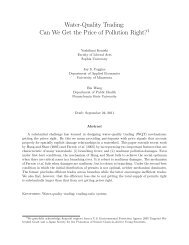
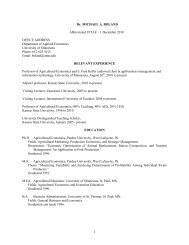

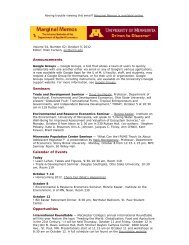


![Publications Since 2000[1].docx](https://img.yumpu.com/30237513/1/190x245/publications-since-20001docx.jpg?quality=85)

